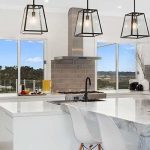If you are planning to build a new home you will find many decisions need to be made. One of the more important of these is the materials you want the various components of your home to be made from. But before anything else can go into the home, the floor must be put down, even though the coverings – if there are any – will need to wait until later.
It is important then, to decide what material you will have your floors made from, for each specific roo, such as the kitchen, bathroom, living room and bedroom. There are several choices:
- Solid timber
- Floating timber that is installed over something else, often done for renovations.
- Flooring panels that must be covered with something such as carpet or vinyl (although you need a professional carpet cleaning service like www. brilliancecarpetcleaningperth.com.au close at hand).
- Polished concrete
- Tiles – ceramic, cork, porcelain or stone
Advantages of a solid timber floor
Solid timber is a very popular choice of flooring, even though it is fairly expensive. It has several advantages; durability, strength, aesthetics and variety in colour and pattern that can be achieved by using parquetry.
For a solid timber floor, you would usually have tongue and grooved planks that fit together and are laid directly over the floor joists. This kind of flooring is extremely durable and long-lasting. It can last a lifetime. Once it is finished properly it will not scratch too easily, but after some years it can be re-sanded and finished to create a floor that is almost new again.
Maintenance is relatively easy with damp mopping and vacuuming the two best ways to keep it clean. Modern finishes mean polishing is not necessary.
Disadvantages of timber flooring
If you have pets inside, a timber floor can be scratched from them walking about. Dogs cannot retract their claws like cats do, so every step they take can leave a mark. The floor can also be scratched or dented from moving furniture, walking on it in high heels and some children’s toys.
Note that timber veneer flooring is a different product altogether. It has a thin timber veneer glued down over the top of a cheap timber, meaning that it cannot be sanded back to remove scratches as the veneer is not deep enough. It is more affordable, but does not last as long.
Timber absorbs moisture from the atmosphere, so it has to be left in the house to acclimatise before being laid.
Advantages of tile flooring
The advantages of tile flooring vary according to the kind of tile you get. Tile is the flooring of choice in wet areas such as bathrooms. Porcelain tiles are actually made from ceramic and can be used indoors and out. The two kinds are vitrified or glazed. It is important to know the difference because vitrified tiles show the same colour throughout the depth of the tile. Why does this matter? Any chips or cracks will not be so noticeable. Glazed tiles that chip or crack will show a different colour, making the damage much more noticeable. That said, both are strong and durable and should not sustain damage with normal care. With the exception of carpet, most floors will sustain damage of some kind if you drop something heavy on them.
Disadvantages of tile flooring
Tile is hard to fall on, cold to tread on and noisy, at least compared to carpet. Tiles require a specialist to install so you can’t save with DIY. Cork tiles look beautiful and are softer to walk on, but require maintenance to keep them sealed from moisture. Stone tiles also require sealing as stone is naturally porous.






